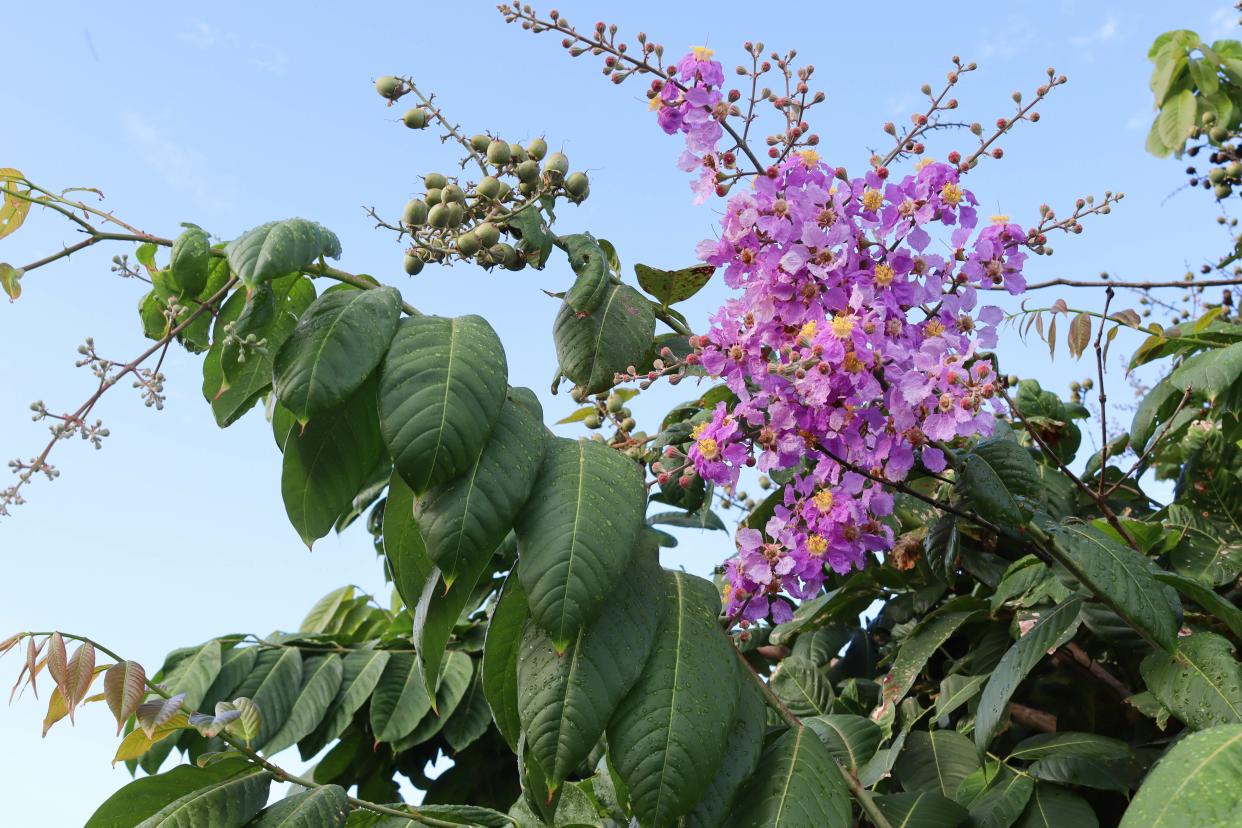CHARLES REYNOLDS: Queen's crape myrtle grows tall and attractive

The queen’s crape myrtle — also called pride of India — puts common crape myrtle hybrids in the shade, literally. Ranging from 30 to 60 feet tall, this deciduous species (Lagerstroemia speciosa) boasts large leaves and a broad, rounded canopy. Native to Southeast Asia, queen’s crape myrtle is suitable only for the warmest areas of Central Florida. Even where it can be grown, however, the tree isn’t particularly popular: its spring and summer flower clusters aren’t much larger than those borne by some of the hardier hybrids. But blossoms of the queen’s crape myrtle are extremely attractive, displayed in shades of pink and purple that fade to white. Its medium-green leaves are up to 10 inches long, and – like many crape myrtles – it has smooth, attractive bark that peels off in strips. Install plants in full sun on well-drained sites fortified with organic matter. Propagate with seeds and cuttings. Plants and seeds are available online.
CARABOO PROVIDES SHADE, FLOWERS, FRUIT
Among my favorite memories of Coral Gables’ Fairchild Tropical Botanic Garden are the times I rested on a particular bench and enjoyed the shade of a handsome caraboo tree. Also called nance-fruit tree, the caraboo is a cold-hardy, evergreen species (Byrsonima crassifolia) native from Mexico to northern South America. This tree — 15 to 30 feet tall — is especially attractive in late spring and early summer when ruffled, yellow-and-orange blossoms are displayed in 6-inch clusters. Repeat flowering may occur in late summer, followed by edible round fruit the size of cherries. The fruit — sold in markets from Mexico to Peru — can be eaten fresh and used to flavor beverages and desserts. Cultivate this species, which has a slow to moderate growth rate, in full or part-day sun on well-drained sites. Amending sites with organic matter isn’t recommended. Propagate caraboo with seeds. Both seeds and plants are available online.
ROYAL PURPLE BLOSSOMS
Species and hybrids of Tibouchina shrubs and small trees have square stems and bear distinctive royal-purple flowers throughout the warm season. Native to Brazil, these plants — often called princess flowers and glory bushes — are sensitive to low temperatures, so they should be installed in sheltered locations. Tibouchinas grow rapidly in sun or dappled light and may require pruning in early spring to stay in bounds. These plants are extremely vulnerable to the root-knot nematodes found in our sandy soil. Deter nematodes by incorporating considerable organic matter into planting sites and by maintaining a thick layer of mulch. Propagate Tibouchinas with warm-season cuttings.
TURF FERTILIZATION
If you haven’t fertilized your lawn yet, do it soon with a high-quality product that includes the full range of micronutrients and a significant percentage of slow-release nitrogen. If possible, apply a fertilizer that features little or no phosphorus. Note: Milorganite isn’t a complete fertilizer.
This article originally appeared on The Ledger: WEEKEND PLANTINGS

